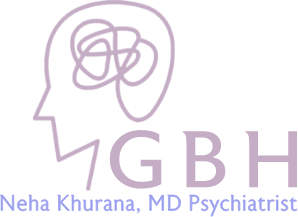EMDR Therapy in Norcross, GA

EMDR Therapy: A Gentle Pathway Through Trauma
Sometimes, trauma doesn’t speak in words—it lives in the body, the breath, the quiet places we carry alone. It shows up in how we feel about ourselves, how we relate to others, and how safe we feel in the world. For many of us, especially those holding complex trauma, childhood wounds, betrayal, or the invisible weight of generational pain, healing doesn’t come from just talking about what happened.
This is where EMDR Therapy (Eye Movement Desensitization and Reprocessing) can offer something tender, powerful, and deeply reparative. At Georgia Behavioral Health in Norcross, GA, our experienced EMDR therapists provide a safe and supportive environment where you can begin reprocessing painful experiences, reduce emotional distress, and rebuild a stronger sense of self.
If you are searching for a compassionate and skilled EMDR therapist in Norcross, GA, we are here to walk with you through your healing journey. Contact Georgia Behavioral Health today to schedule your EMDR Therapy session.
What Is EMDR?
EMDR is a trauma therapy that helps the brain reprocess memories that got “stuck” during overwhelming or painful experiences. When something traumatic happens, our nervous system can become flooded—freezing the memory in a raw, unprocessed form. Instead of fading with time, it lingers. A sound, a smell, a glance can trigger that memory like it’s happening right now.
EMDR supports the brain’s natural healing ability. With the use of bilateral stimulation (such as eye movements, tapping, or sounds), the therapist gently guides you through distressing memories while helping the brain “digest” them in a way that feels safer, calmer, and more resolved.
How EMDR Therapy Helps?
You don’t have to relive the trauma in great detail to heal from it. That’s one of the most compassionate aspects of EMDR. It works with your whole system—body, mind, and nervous system—to release the charge from the past. Over time, those sharp, painful memories lose their grip. You remember the story, but it no longer holds power over you.
EMDR helps to:
- Shift deeply ingrained negative beliefs like “I’m not safe,” “I’m not enough,” or “It was my fault”
- Calm the body’s fight-flight-freeze responses
- Restore a sense of choice, agency, and connection with the present moment
Who Needs EMDR Therapy?
EMDR Therapy can be deeply supportive for people carrying unresolved pain or memories that continue to affect daily life. It is often recommended for those who want to heal from the past and find new ways to feel safe, balanced, and whole again.
You may benefit from EMDR if you are:
- Struggling with post-traumatic stress disorder (PTSD) or unresolved trauma
- Coping with painful memories from childhood abuse, neglect, or bullying
- Experiencing anxiety, depression, or panic attacks that feel rooted in past experiences
- Holding the weight of grief, loss, or betrayal trauma
- Finding it difficult to feel safe, connected, or at peace in your daily life
- Living with the invisible impact of generational or complex trauma
At Georgia Behavioral Health in Norcross, GA, our experienced EMDR therapists provide compassionate care to help you process painful experiences and move toward lasting emotional healing.
What to Expect
The process of EMDR therapy is structured, but it’s also intuitive and paced with great care. In my practice, we move slowly—especially if you carry complex trauma or have been in environments where safety wasn’t always guaranteed.
We begin by creating safety and stabilization, building inner resources, and gently identifying the memories or beliefs you want to shift. Then, when you’re ready, we process those memories using EMDR techniques.
Each EMDR therapy session is grounded in consent, relationship, and respect for your pace.
